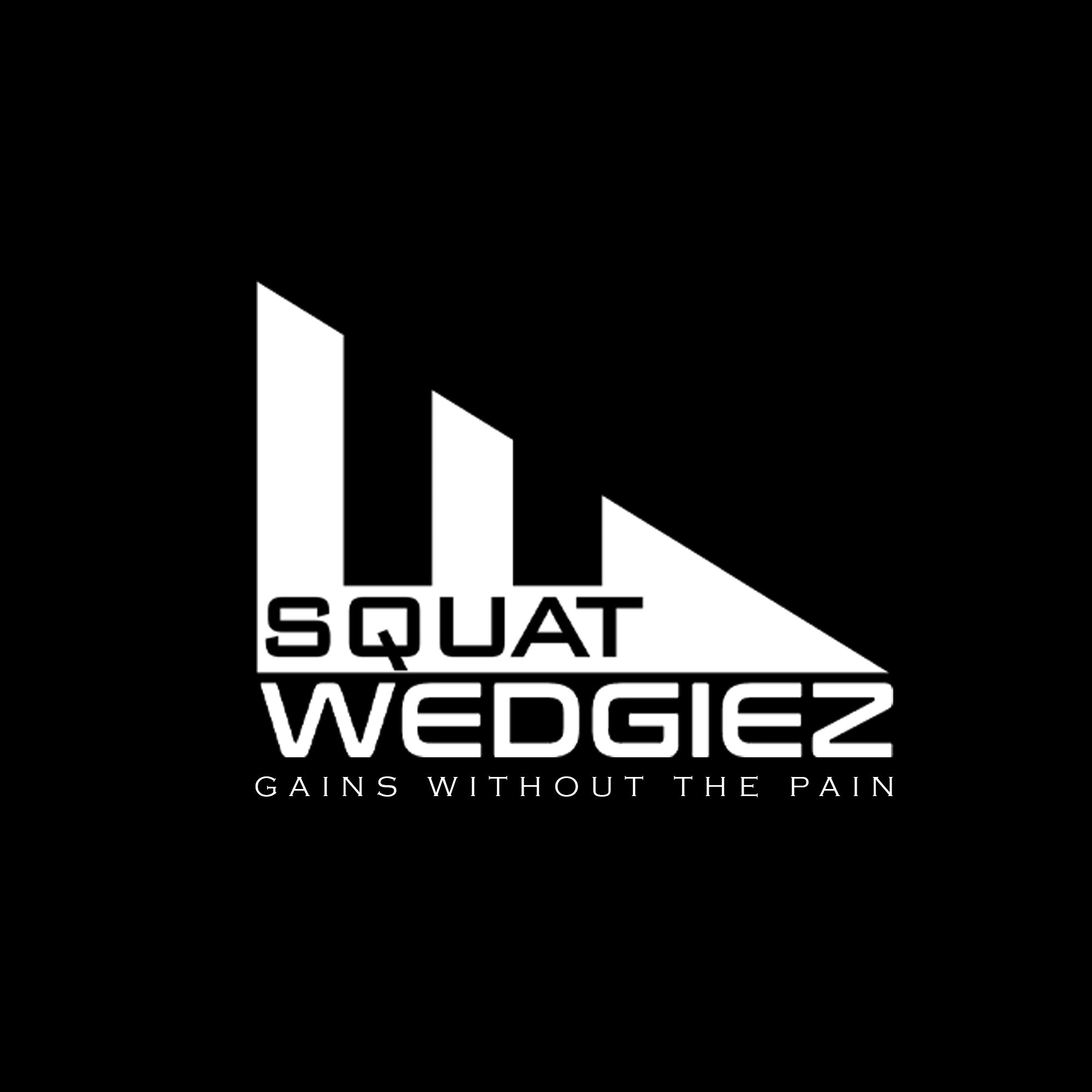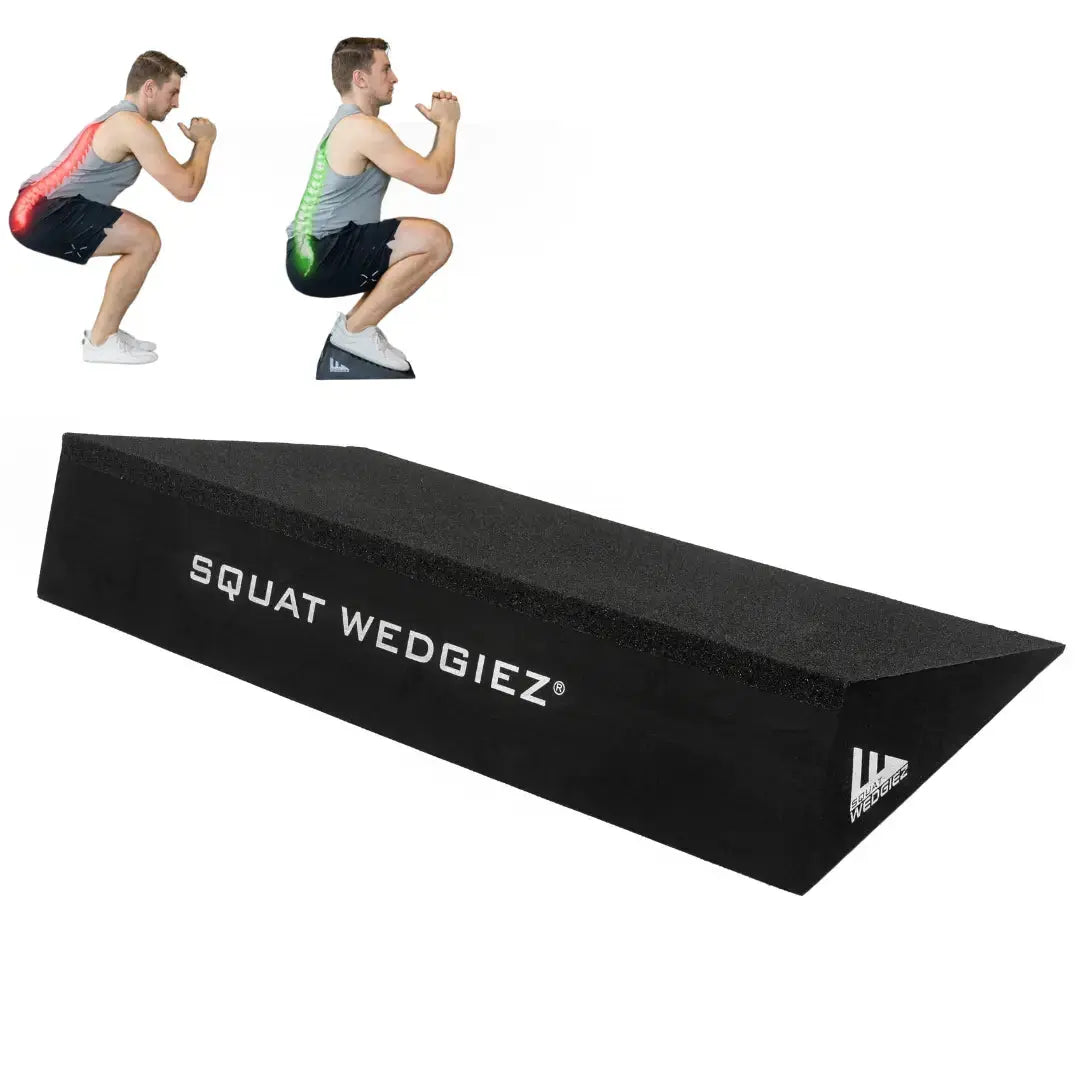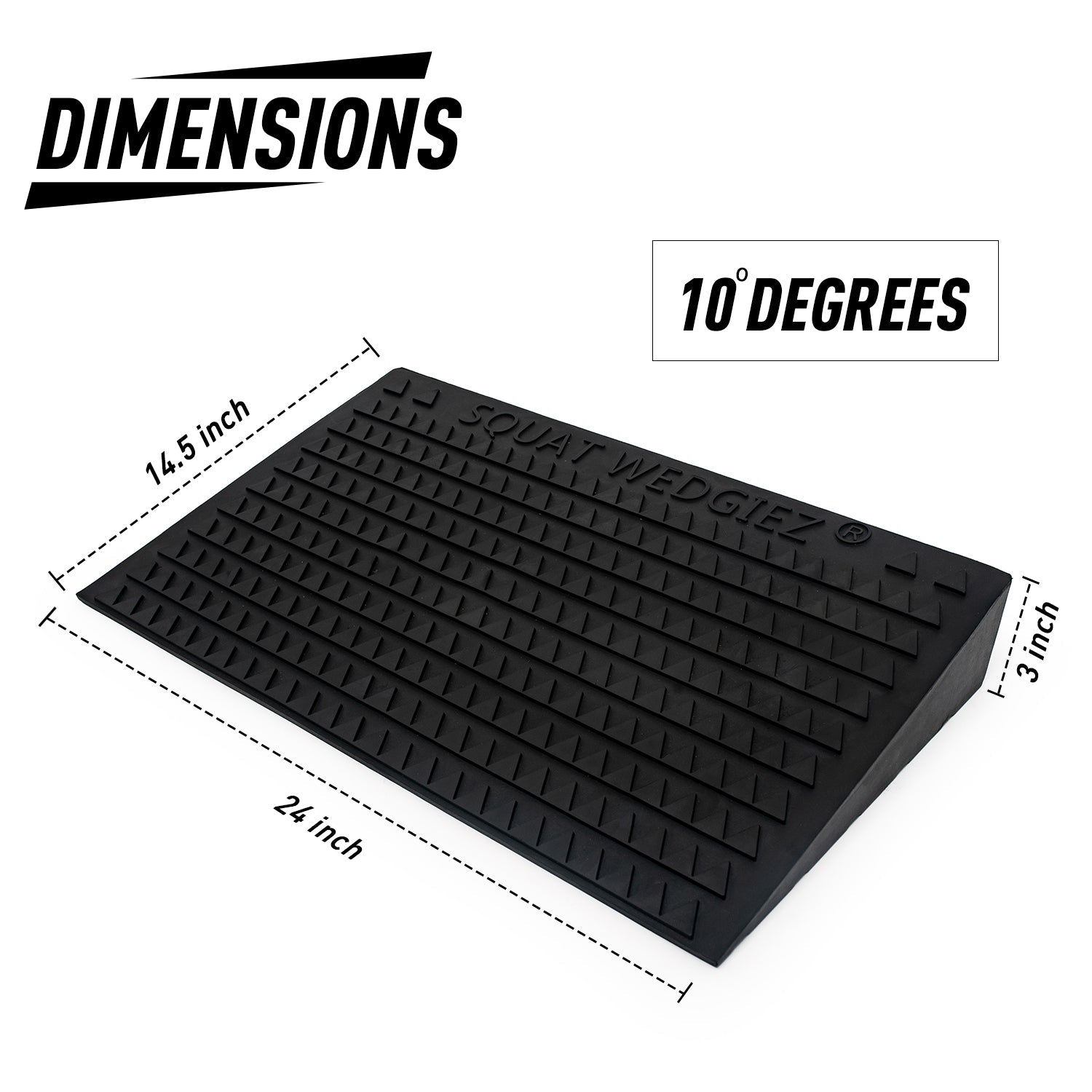Die Wissenschaft hinter Squat Wedgiez
Wissenschaftlich belegt: Untersuchungen legen nahe, dass Kniebeugenkeile das Verletzungsrisiko beim Kniebeugen verringern, die Kniebeugentiefe verbessern und bestimmte Muskelgruppen ansprechen können (1–7). Jeder kann von der Verwendung von Squat Wedges profitieren, insbesondere wenn es Ihnen schwerfällt, tief in die Hocke zu gehen.
„Es ist klar, dass eine Fersenerhöhung sowohl bei trainierten als auch bei ungeübten Probanden dazu beiträgt, die Tiefe der Kniebeuge zu verbessern.“ - Jagessar, 2019
„Diese Studie zeigt, dass es aus Sicht der Wirbelsäulensicherheit für unerfahrene Krafttrainer vorteilhaft erscheint, Kniebeugen mit leicht angehobenen Fersen auszuführen.“ – Sayers, et al. 2020
Trainiere intelligenter, NICHT härter:
Es hat sich gezeigt, dass das Training des Unterkörpers in seinem gesamten Bewegungsbereich das Muskelwachstum fördert (8). Wenn Sie den Muskel aufgrund von Einschränkungen nicht beanspruchen können, wächst der Muskel nicht und wird auch nicht stärker. Die Verwendung von Kniebeugenkeilen kann eine effektive Möglichkeit sein, Ihre Bewegungsfreiheit zu verbessern und die Muskelmasse Ihres Unterkörpers zu erhöhen.
Trainieren Sie überall und jederzeit:
Squat Wedgiez wurden für den Einsatz überall entwickelt, sodass Ihr Training nicht auf das Fitnessstudio beschränkt ist. Sie können sie in den Park, an den Strand, ins Hotel oder ins Fitnessstudio zu Hause mitnehmen. Und da sie weniger als ein Pfund wiegen, können Sie auch damit fliegen!
Häufig gestellte Fragen
1. Was ist der Unterschied zwischen den beiden Keilen?
Travel Wedgiez wurden für vielbeschäftigte Profis entwickelt, die einen kompakten Wedge benötigen, den sie zu ihrem Training mitnehmen können. Sie haben einen zusätzlichen Halt auf der Unterseite, so dass Sie überall trainieren können. Außerdem bestehen sie aus einem hochdichten Polyethylenmaterial, das bis zu 750 Pfund tragen kann.
Die XL Wedgiez sind viel größer und ermöglichen eine größere Fersenhöhe. Sie sind ideal für größere Füße oder diejenigen, die zum Kniebeugen eine höhere Fersenhöhe benötigen. Sie bestehen aus hochdichtem Schaumstoff, der bis zu 500 Pfund tragen kann. Nach einem schweren Heben kommt es häufig zu einer Verformung des Schaumstoffs, der jedoch wieder in seine Standardform zurückkehrt.
2. Was bewirkt das Anheben der Ferse?
Durch das Anheben der Ferse verlagert sich Ihr Schwerpunkt nach hinten, sodass Sie mehr Platz für Ihre Knie haben, um nach vorne zu gehen. Dies ermöglicht eine tiefere Kniebeugenbewegung, die die Oberschenkel und Gesäßmuskeln stärker beansprucht als eine Kniebeuge mit Teilbewegung.
Durch die Anhebung des Vorfußes verlagert sich Ihr Schwerpunkt nach vorne und Sie haben mehr Platz für die Rückwärtsbewegung Ihrer Hüften und Knie. Das Anheben der Zehen kann eine übermäßige Vorwärtsbewegung des Knies beim rumänischen Kreuzheben oder Hüftstoß verhindern. Durch das Hochlagern des Vorfußes werden außerdem die Zehen gestreckt, was die Beweglichkeit des Knöchels verbessert.
Außerdem müssen Sie drei 5-Pfund-Platten stapeln, um die gleiche Fersenhöhe wie beim Squat Wedgiez zu erreichen. Hantelscheiben hinterlassen Lücken zwischen Ihren Füßen und dem Boden, was Ihr Gleichgewicht beeinträchtigt und die sensorischen Informationen verringert, die Ihr Knöchel und Fuß für eine optimale Funktion benötigen.
Wenn Sie weitere Fragen haben, senden Sie bitte eine E-Mail an squatwedges@gmail.com
Danke, dass ich dir einen Wedgie geben darf,
Erik Rokisky, CSCS
Gründer
Verweise
- Sriwarno, Andar und Shimomura, Yoshihiro und Iwanaga, Koichi und Katsuura, Tetsuo. (2008). Die Auswirkungen der Fersenerhöhung auf die Haltungsanpassung und Aktivität der Muskeln der unteren Extremitäten während der tiefen Bewegung vom Hocken zum Stehen bei normalen Probanden. Zeitschrift für Physiotherapiewissenschaft – J PHYS THER SCI. 20. 31-38. 10.1589/jpts.20.31.
- Jagessar, Miguel. (2019). 2D-kinematische Analyse der Auswirkung der Fersenhöhe auf die Kniebeugentiefe. 10.13140/RG.2.2.17688.34568.
- Sayers, Mark & Bachem, Caroline & Schütz, Pascal & Taylor, William & List, Renate & Lorenzetti, Silvio & Hosseini Nasab, Seyyed Hamed. (2020). Die Auswirkung des Anhebens der Fersen auf die Kinematik und Kinetik der Wirbelsäule während der Kniebeuge bei trainierten und unerfahrenen Krafttrainern. Zeitschrift für Sportwissenschaften. 38. 1-9. 10.1080/02640414.2020.1738675.
- Jonathan Sinclair, Bobbie Butters, Paul John Taylor, Mark Stone, Ian Bentley und Christopher James Edmundson (2020) Auswirkungen verschiedener Schuhe auf Kinetik, Kinematik und Muskelkräfte während der Langhantel-Kniebeuge; eine Untersuchung mit Bayes'scher Modellierung, Footwear Science, 12:3, 139-152, DOI: 10.1080/19424280.2020.1769202
- Charlton, JM, Hammond, CA, Cochrane, CK, Hatfield, GL, & Hunt, MA (2017). Die Auswirkungen eines Fersenkeils auf die Biomechanik von Hüfte, Becken und Rumpf beim Hocken bei Personen mit Widerstandstraining. Zeitschrift für Kraft- und Konditionsforschung, 31(6), 1678–1687. https://doi.org/10.1519/JSC.0000000000001655
- Johnston, Christopher; Hunt-Murray, Chase; und Hsieh, ChengTu (2017) „EFFEKT DER ABSATZHÖHEN AUF DIE MUSKELAKTIVIERUNG DER UNTEREN EXTREMITÄTEN FÜR DIE BACK-SQUAT-LEISTUNG“, ISBS Proceedings Archive: Bd. 35: Iss. 1, Artikel 176. Verfügbar unter: https://commons.nmu.edu/isbs/vol35/iss1/176
- Pangan AM, Leineweber M. Einfluss von Schuhen und erhöhter Ferse auf Langhantel-Kniebeugen: Ein Rückblick. J Biomech Eng. 1. September 2021;143(9):090801. doi: 10.1115/1.4050820. PMID: 33844006.
- Oranchuk, DJ, Storey, AG, Nelson, AR, & Cronin, JB (2019). Isometrisches Training und langfristige Anpassungen: Auswirkungen von Muskellänge, -intensität und -absicht: Eine systematische Überprüfung. Skandinavische Zeitschrift für Medizin und Wissenschaft im Sport, 29(4), 484–503. https://doi.org/10.1111/sms.13375
Frequently Asked Questions
Find out answers to common questions we receive about our slant boards, squat wedges, and tib bars.
We recommend you take the "Pick Your Wedgie Quiz" to determine which wedgie is best for you. Please click the title, “Pick Your Wedgie Quiz” in the header to try it.
Heel-elevated squats have been shown to improve your squat depth, reduce tension in your lower back, and target your thighs more than regular squats. When you elevate your heel with a slant board, you shift your center of mass backward, which gives your hips and ankles more space to perform the squat movement.
Also, if you struggle to keep your heels down while squatting, adding a squat wedge or slant board underneath them can teach you how to feel your heels. The feeling of the ground in contact with your heel will improve your balance and ankle mobility.
When the ankle dorsiflexes, the foot needs to pronate. The arch of your foot flattens slightly and the knee travels towards the toes.
Elevating your whole foot or heel on the slant board will allow this movement to happen optimally compared to heel elevation on a plate.
Weight plates leave gaps between your heel and the ground, which decreases your balance and places your weight on your toes.
If your goal is to perform full range of motion squats to strengthen your legs, than an angle between 10 to 15 degrees would work best.
When your goal is to strengthen your thighs and glutes, an angle between 5 to 10 degrees is better because it will make your squat more hip dominant compared to a higher slope squat.
If you have minimal hip and ankle mobility or wanted to target your thighs only, a 20-degree slant board works well. I don't see the need to go above 20 degrees because it will push your center of mass too far forward and not allow you to load your hips.
Generally speaking, squatting on a lower slope will require more hip and ankle mobility compared to a steeper slope. As the angle increases, your hips and torso will stay more upright, which will make it easier to squat to full depth. This will place more tension on your quadriceps. (read more)
Our Adjustable Wedgie is the best tool for the job because of its 20 degree slope and stability. At 24 pounds, it wont move when you push off of it. With a height of 4.5 inches, it gives you the perfect platform to train your glutes. Plus, it is 14 inches long so you can elevate your whole foot (learn more).
A slant board has been shown to improve one’s lower body workout by increasing the range of motion for certain exercises.
The most popular movement being the heel elevated squat followed by the forefoot elevated calf stretch.
In adddittion to these exercises, people use a slant board for heel elevated split squats, step downs, hip thrusts and plyometrics.
A slant board with a width of 24 inches should be wide enough to perform a hip distance or shoulder width squat.
Our Adjustable Wedgie is 24 inches wide and our SumoWedgie is 24 inches wide.
If neither of these options are wide enough, then we recommend you choose our pair of DUO Wedgiez to customize your stance to your needs.
Walk up your slant board so your toes are elevated. Once your whole foot is on the slant board, lean forward to intensify your stretch.
You can apply the same concept to stretch your wrists. Place your hands on the slant board with the heel of your wrist at the top and your fingertips going downhill. Press the heel of your wrist down and lean back slightly.
If you struggle to squat deeply because your heels keep coming up, than a slant board can help.
Elevating your heel with a squat wedge or slant board can help push your center of mass backward so that your heels don’t lift while squatting.
Write content to help your customers to better understand your products or policies.
Please click HERE to watch a video on our top five exercises for beginners.
The quadricep (thigh) muscle will be the primary muscle trained during a slant board or squat wedge heel elevated squat. The vastus lateralis, vastus intermedius, and vastus medialis (VMO) will be targeted the most, followed by the rectus femoris. The glutes will be a secondary muscle strengthened followed by your adductors (inner thighs).
Strengthening your tibialis anterior, the muscle located on the front of your lower leg, can provide several benefits.
These include improved ankle stability, better balance and coordination, reduced risk of shin splints, and enhanced performance in activities such as walking, running, and jumping.
Additionally, a strong tibialis anterior can help prevent common foot and ankle injuries and contribute to overall lower body strength and stability.
The best way to train your anterior tibialis is with our Versa Tib Bar.
A "tib raise," short for tibialis raise or tibialis anterior raise, primarily strengthens the tibialis anterior muscle.
The tibialis anterior is located on the front of the lower leg. It is responsible for dorsiflexion, which is the movement that brings the top of the foot towards the shin.
By performing tib raises, you can target and strengthen the tibialis anterior, which can help improve ankle stability, balance, and overall lower leg strength.
This exercise is particularly beneficial for athletes, runners, and individuals involved in activities that require strong lower leg muscles and ankle stability.
Shin splints, or medial tibial stress syndrome, occur when there's excessive stress on the shinbone and the tissues attaching muscles to the bone.
Loaded tibialis raises, performed with a tib bar, specifically target this area. By adding weight, this exercise not only strengthens the anterior tibilias but also puts controlled stress on the tibia, encouraging positive adaptive responses in the bone itself.
Similar to how weightlifting increases bone mineral density in the arms, legs, and spine, loaded anterior tibialis raises enhance the bone density of the tibia.
This exercise stimulates the bone remodeling process, where the bone tissue is gradually replaced with new, stronger tissue.
Over time, this process increases the overall density and thickness of the tibia, making it more resilient to the stresses of high-impact activities. (read more)
A Nordic bench is a piece of exercise equipment that allows you to perform a Nordic hamstring curl, which is a bodyweight exercise that targets your hamstrings, calves and lower back.
Research has shown that Nordic hamstring exercises were more effective in improving knee pain and stability after ACL reconstruction, and promoting the recovery of knee function.
The hamstrings are the primary muscle worked followed by the calves and low back.
Yes—when used correctly, a slant board can actually help reduce and prevent knee pain. By elevating your heels, it allows for a more upright squat, increasing quad activation and strengthening the muscles that support your knees. This builds resilience in tendons and ligaments, improves joint stability, and can help with conditions like patellar tendonitis (“jumper’s knee”). Always start with a comfortable angle and pain-free range of motion, and progress gradually.
Shipping & Returns
Find answers to commonly asked questions on shipping & returns
Do you offer free shipping?
Yes, on all orders shipped in the Continental US.
Do you ship overseas?
Yes, but we are not responisble for tax and duty costs.
How long will it take to get my orders?
Orders take 24 hours to process and will take 4-7 business days to arrive. Overseas deliveries can take anywhere from 7-16 days. Delivery details will be provided in your confirmation email.
What is your 90 day return policy?
You have 90 days to try our products risk free. If you aren't satisfied, please email erik@squatwedgiez.com.
You will receive a free shipping label to send back the product if you live in the Continental United States.
If you live outside of the Continental United States, you must pay the cost of shipping.
After inspection, we will give you a full refund if the product doesn't have any further damage.



